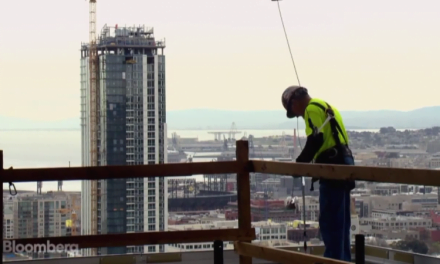With more Millennials in the workforce than any other demographic, landlords and owners of office space are beginning to take notice.
53.5 million workers born after 1982 are working across the nation, and this number is growing, according to Pew Research Center. They surpassed the next largest workforce demographic — members of Generation X — early in 2015. Meanwhile, Baby Boomers continue to retire with 44.6 million Boomer workers in the first quarter (Q1) 2015, down from about 65 million at their peak.
A recent report by commercial real estate news source, GlobeSt, highlights the growing interest commercial landlords have shown in catering to Millennial workers. These interests include out of the box workspaces, including open floor plans, in-house cafes and room enough for the ping pong table that start-ups seem to require to function. Further, of particular interest to this generation of workers is location.
Specifically, the author remarks on a demand shift from suburban areas to cities. After all, young adults prefer to live close to where they work, and Millennials undeniably prefer lively cities over the dull suburbs of their parents’ heyday.
For evidence, REIS notes office markets in urbanized business centers have recovered more quickly than in suburbia. This is the nationwide trend, though in California the difference is marginal.
Across California’s largest submarkets, the suburban office market of the Inland Empire is performing most poorly, with a 12.9% vacancy rate as Q3 2015. However, office vacancies in Los Angeles, Orange County and San Diego are only performing slightly better with vacancy rates around 12% in each of those regions, according to Voit Real Estate Services.
The difference is slight in California, which experienced overbuilding in the office market due to the optimism of the Millennium Boom. However, as the job market continues to recover, expect the gap between the suburban and urban office sector to widen.
This is good news for landlords of urban office space. But what about suburban landlords?
After all, nothing can be done about an office’s location, but even an office in the heart of suburbia can be tailored to an “urban design.”
Many companies prefer to build their own office space, custom designing every detail. However, tech start-up companies often need space fast, thus turning to pre-built office space. For landlords, appealing to these types of companies is significant.
To create an urban, appealing feel, add a few quality touches. Voit documents that tenants are most interested in occupying Class A office space, which demands the highest rents. With high vacancy rates across the office sector, tenants can afford to be selective — and landlords rarely have their pick of tenants. Therefore, the investment is necessary for some.
For example, do away with the old fluorescent lights and tiny offices. Instead, invest in:
- open floor plans;
- energy efficient updates, such as solar panels, which reduce utility costs and can increase the asking rent;
- high-end finishes, like granite, marble and hardwood in reception areas;
- modern lighting elements;
- architectural interest, such as exposed beams, unique floors or a thoughtful color scheme, particularly beneficial for pre-builds;
- dedicated green spaces, like a rooftop garden or drought-friendly landscaping;
- high-end appliances; and
- electric car charging stations in the parking lot.













